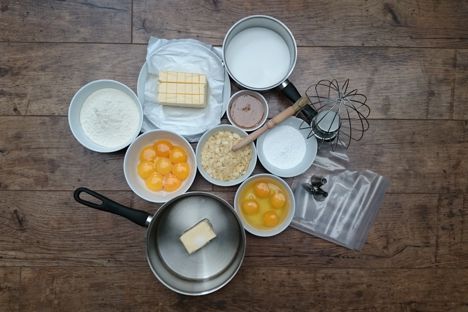
Conversion guides
Unfortunately, not all kitchens are created equal and it often means we end up with different ovens and equipment to what’s used by a chef or in a recipe. Here’s a few handy conversions to help you make any recipe easily at home.
Conversion guides
Unfortunately, not all kitchens are created equal and it often means we end up with different ovens and equipment to what’s used by a chef or in a recipe. Here’s a few handy conversions to help you make any recipe easily at home.
Oven temperatures
The majority of ovens are either electric (°C) or gas (gas mark). Fan-assisted ovens may need to have the temperature dropped by 10 – 20°C to compensate.
100°C and below = gas mark ¼
120°C = gas mark ½
140°C = gas mark 1
150°C = gas mark 2
160°C = gas mark 3
180°C = gas mark 4
190°C = gas mark 5
200°C = gas mark 6
220°C = gas mark 7
230°C = gas mark 8
250°C and above = gas mark 9
Measuring
Metric measurements are the most commonly used in the UK, but it is useful to know some of the imperial and alternative conversions.
5ml = 1 teaspoon
15ml = 1 tablespoon (or 3 teaspoons)
300ml = ½ pint
600ml = 1 pint
1 litre = 1¾ pints
28g = 1oz
225g = 8oz (or ½ lb)
450g = 16oz (or 1lb)
1cm = ½ in
2.5cm = 1in
15cm cake tin = 6in
18cm cake tin = 7in
20cm cake tin = 8in
23cm cake tin = 9in
25cm cake tin = 10in
Cup measurements
These are commonly used in the US, Canada and Australian, although all have their own measurements. These are slightly more subjective, depending on the size of the cup and the type of ingredient measured. The recipes are based more on proportions – using the same cup measure means all your ingredients are in consistent proportions.
1 US cup = 240ml for liquids
1 US cup = 140g of flour
1 US cup = 225g of butter/fat
1 US cup = 200g of sugar
1 US cup = 190g of rice (uncooked)


